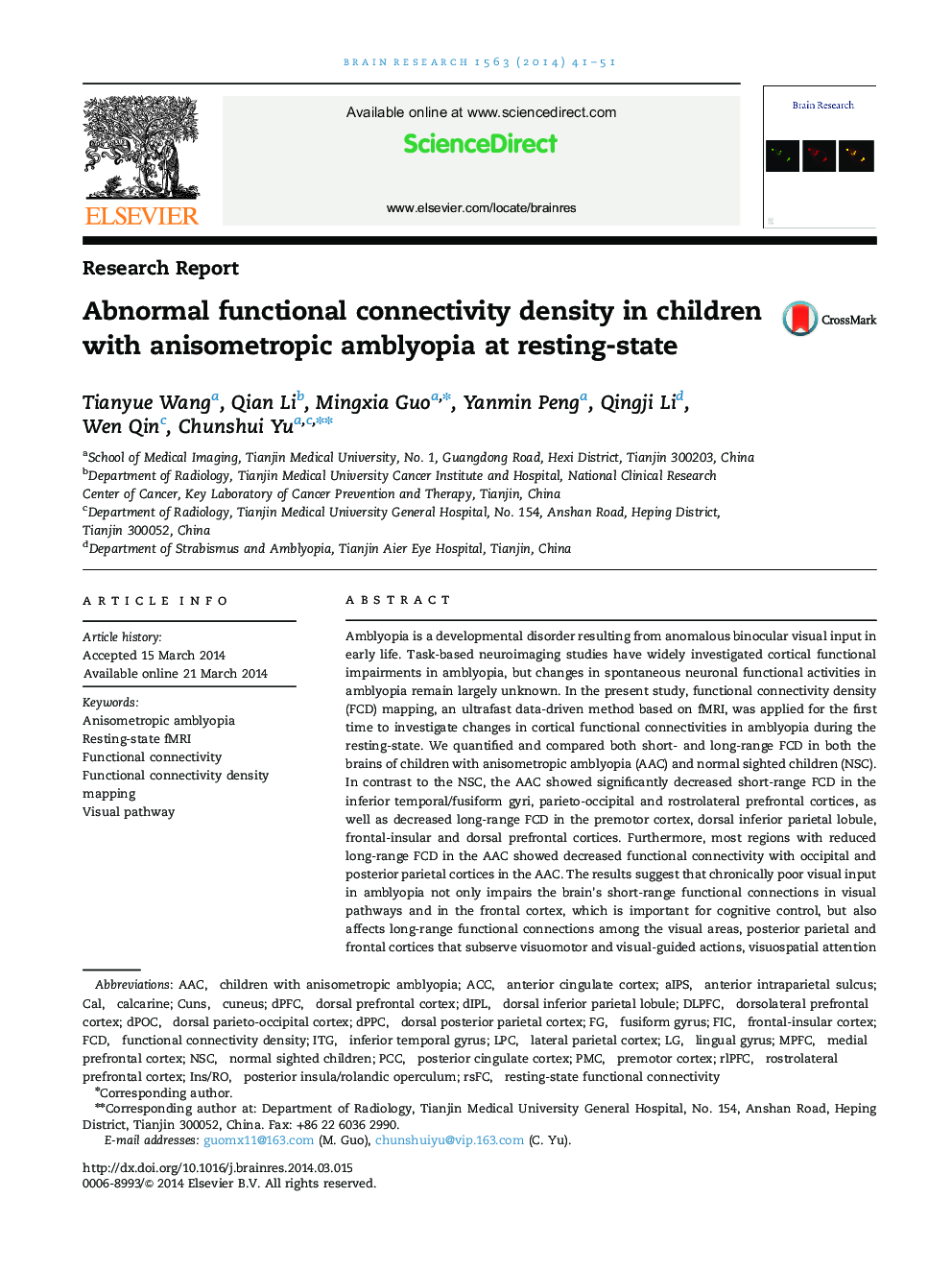| کد مقاله | کد نشریه | سال انتشار | مقاله انگلیسی | نسخه تمام متن |
|---|---|---|---|---|
| 4324311 | 1613876 | 2014 | 11 صفحه PDF | دانلود رایگان |
• FCD mapping was used to detect changes of cortical functional connections in AAC.
• Short-range FCD (srFCD) and long-range FCD (lrFCD) were reduced in the AAC.
• Reduced srFCD was observed in visual pathways and frontal cognition-control area.
• Reduced lrFCD was found in fronto-parietal areas serving visuomotor and attention.
• Abnormal FCD helps to understand higher-level behavioral defects in amblyopia.
Amblyopia is a developmental disorder resulting from anomalous binocular visual input in early life. Task-based neuroimaging studies have widely investigated cortical functional impairments in amblyopia, but changes in spontaneous neuronal functional activities in amblyopia remain largely unknown. In the present study, functional connectivity density (FCD) mapping, an ultrafast data-driven method based on fMRI, was applied for the first time to investigate changes in cortical functional connectivities in amblyopia during the resting-state. We quantified and compared both short- and long-range FCD in both the brains of children with anisometropic amblyopia (AAC) and normal sighted children (NSC). In contrast to the NSC, the AAC showed significantly decreased short-range FCD in the inferior temporal/fusiform gyri, parieto-occipital and rostrolateral prefrontal cortices, as well as decreased long-range FCD in the premotor cortex, dorsal inferior parietal lobule, frontal-insular and dorsal prefrontal cortices. Furthermore, most regions with reduced long-range FCD in the AAC showed decreased functional connectivity with occipital and posterior parietal cortices in the AAC. The results suggest that chronically poor visual input in amblyopia not only impairs the brain׳s short-range functional connections in visual pathways and in the frontal cortex, which is important for cognitive control, but also affects long-range functional connections among the visual areas, posterior parietal and frontal cortices that subserve visuomotor and visual-guided actions, visuospatial attention modulation and the integration of salient information. This study provides evidence for abnormal spontaneous brain activities in amblyopia.
Journal: Brain Research - Volume 1563, 14 May 2014, Pages 41–51
